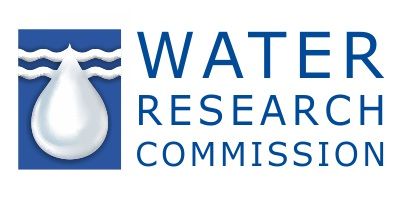From Economic and Water Poverty to Prosperity - Dr. Shafick Adams (WRC)
Published on by Adriaan Taljaard, Water Research Commission - Manager Marketing and Communication in Academic
We need to unlock more water resources and drive efficiency in our existing supplies to stimulate the economy and job growth.
As our climate is changing and the main input into our water resources, rainfall, becomes more variable in time and space we need to adjust how we manage and value our water resources.
Water is an important cog in our economy. The challenges we face are not only on the supply-side but also on the demand-side. On the one side the custodians of our water resources are blamed for our water woes through poor planning and operation & maintenance. Water users are blamed for excessive water use. South Africa’s per capita water use is of the highest in the world. The world average is 170 litres per day compared to our average of 235 litres per day and in some metropolitan areas can reach 600 litres per day.
 While we have rural communities that still do not have adequate access to water – some below 50 litres per day. There is a need to radically change how we supply and use water in this country. As our water demands grow we should do things differently while tackling our challenges head-on.
While we have rural communities that still do not have adequate access to water – some below 50 litres per day. There is a need to radically change how we supply and use water in this country. As our water demands grow we should do things differently while tackling our challenges head-on.
Access to water is a key requirement to grow the economy at all levels. Three barriers to economic growth are recognised by economists - improper infrastructural investment, skills and education development and public service delivery.
The traditional and established means of water supply have worked well when only a small population was served. It is increasingly more difficult to serve scattered communities owing to challenges in settlement densities and topography among others. The way we manage our water resources also needs radical transformation.
Post-1994, we have achieved a great deal in getting people connected to water infrastructure. However, the question remains are these connections supplied with water all the time? Did we only add how many water supply points we have installed? We have reported for the Millennium Development Goals 88.3% safe water access. Did we also subtract the failed or unsustainable systems? Basic domestic water supply remains a challenge.
Let us consider what is called the “Priority District Municipalities that are dysfunctional” – these municipalities sit on top of our higher exploitable groundwater resources areas. Yet the resource is ignored in the main or poorly managed. Because we are obsessed with building dams; groundwater can be considered the Cinderella resource. What are some of the root causes?
Firstly, groundwater is an invisible resource to the layperson. It is difficult to determine its volumes as opposed to a dam this leads to a perception problem about its assurance of yield – it needs to be developed and managed by skilled personnel.
Secondly, it has a lower capital expenditure cost compared to dams but a higher long-term operational cost. It seems that our financial systems cannot deal with this phenomenon and most favoured projects are those with higher capital expenditure over a shorter period. In addition, the financial burden is on the municipality for local water schemes and they tend to prefer receiving piped water from another Water Services Provider to externalise planning and logistics.
Thirdly, the distribution infrastructure and abstraction systems need to be operated, maintained and managed in addition to how the aquifers respond to the abstraction – this is no easy task. Lastly, the institutional biases to dams and now desalinisation plants. At the local municipality level where groundwater is a conjunctive or sole source of supply management is poor or absent.
A Water Research Commission study recently surveyed 24 municipalities that uses groundwater as a domestic supply source and 71% of these municipalities do not have a groundwater management plan and 17% do not know if they have a plan while only 13% of the municipalities have plans. This is also reflected in the lack of specialised groundwater personnel in the employ of the municipalities – 79% do not have the required skill to manage their groundwater supply schemes.
This is clearly a recipe for disaster and points to poor governance provisions. When a groundwater scheme fails, the tendency is to blame the resource as unreliable while the real reason is poor management and institutional arrangements. The myth that groundwater is always cheap to manage, available in exploitable quantities all over the place, always potable and free are some of the factors that creates the perception that it needs limited management.

Groundwater is but one example of how we do not use available resources to meet our increasing demands. By including this under-utilised resource in our water supply mix with other water sources like direct wastewater reuse, rain and storm water harvesting we can improve our water security. At the same time, we need to overhaul our deteriorating water infrastructure.
The Water Research Commission estimated that our non-revenue water loss amounts to around R7 billion and a large part is because of leaking infrastructure. The War-on-leaks programme and artisan training programmes is a step in the right direction. On the demand side, we need to radically change our approaches to water use across all sectors.
We need to upscale sanitation technologies that uses no or significantly less water to flush our toilets. The Water Research Commission have prototyped toilets that can be flushed with less than one (1) litre of water. Yes, you read that correctly! The way we design our buildings and cities need to radically change to become water and energy efficient.
Imagine the manufacturing opportunities if we need to retro-fit cities and create new industries that supply water wise technologies. This needs to be supported by an increase in R&D spending. Our declining manufacturing sector certainly needs this push. The net benefit will be to the economy; water innovations and technologies can contribute to get us out of this ‘growth trap’ that we find ourselves in. South Africa’s water economy can reduce the high levels of unemployment, poverty, and inequality.
Water and sanitation wise manufacturing is a great way to achieve this. Inefficient use and management of our water resources hampers our growth efforts and water needs to be better valued as a major direct and indirect contributor to GDP.
Media
Taxonomy
- Water Efficiency
- Drinking Water Security
- Drinking Water Treatment
- Water Resource Management
- Access
- Drinking Water
- Infrastructure
- Water Resource Management
- Market Access